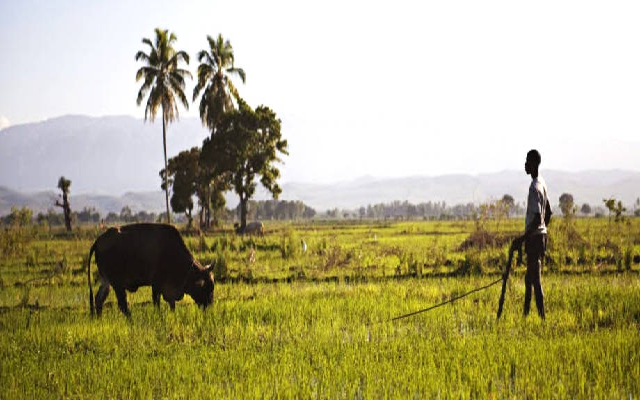Glasgow: Weather-related disasters have increased fivefold in the past 50 years alone, but humanity, and especially vulnerable communities, is only starting to adapt to the new reality of weather extremes.
As the global community discusses different adaptation options at COP26 in Glasgow, the United Nations University — Institute for Environment and Human Security (UNU-EHS) and World Food Programme (WFP) on Tuesday called for a better integration of nature-based solutions into adaptation planning.
The recently-launched UNU-EHS flagship report “Interconnected Disaster Risks” illustrates the interconnectivity of disasters around the world, making it clear that interconnected solutions, such as nature-based solutions, deserve more attention.
“Science is clear on the fact that nature-based solutions not only address climate change, they also reduce disaster risk, biodiversity loss and food insecurity in an integrated way,” said Jack O’Connor, Senior Scientist at UNU-EHS.
For example, in Bangladesh, one of the most cyclone-affected countries in the world, numerous projects are underway to protect and restore coastal ecosystems, primarily mangrove forests.
Ecosystems like mangrove forests not only strengthen coastal protection against cyclones and rising sea levels, but they also store atmospheric carbon and contribute to local livelihoods as they are home to fish, crabs, and clams.
Nature-based solutions are also proving their value in the humanitarian context.
From 2014 to 2019, the World Food Programme has worked with vulnerable communities to rehabilitate 1.5 million hectares of degraded land and forests, and has established 54,000 ponds, wells and communal reservoirs.
“Nature itself is often the best way to protect both people and the planet. Rehabilitating ecosystems helps to reduce people’s vulnerability to climate shocks and stresses while also protecting biodiversity and promoting social cohesion,” said Gernot Laganda, Chief of Climate and Disaster Risk Reduction Programmes at WFP.
Despite there now being widespread consensus that nature-based solutions need to be considered in adaptation planning, their potential is still largely untapped.
“Nature-based solutions efforts today focus disproportionately on forest ecosystems and specifically on tree planting. The Glasgow Leaders’ Declaration on Forests and Land Use, which was adopted at COP26 to end and reverse deforestation by 2030, is an example of that,” Zita Sebesvari, Deputy Director at UNU-EHS, said.
“While the declaration is a much-welcomed step, we need to go beyond forests and look also for example at grasslands, peatlands, marshes and marine ecosystems, all of which build on the rich diversity of ecosystems for adaptation, disaster risk reduction and biodiversity.”
While nature-based solutions win both in science and on the ground, they can only fully develop their full potential if they are designed as integrated solutions and in combination with other safety nets — for example, climate risk insurance or forecast-based financing.
Over the long-term, planting or protecting forests can only be an effective climate adaptation measure if this gets complemented by actions that also relieve the environmental and social pressures which led to their destruction in the first place.
Communities which face hunger and poverty may be forced to cut down trees to clear land for agricultural use or to generate income from the wood. To be truly effective, an integrated resilience programme would therefore combine nature-based solutions with social and financial protection schemes.
Initiatives such as WFP’s R4 Rural Resilience Initiative take an integrated approach by combining landscape restoration with access to micro insurance and financial services, while UNU-EHS works with partners to develop and introduce climate risk insurance products for individuals and communities in the Caribbean and Pacific regions.
These kinds of integrated approaches increase the likelihood of success for climate adaptation strategies by reducing vulnerability to the increasing impacts of climate change.
As world leaders at COP26 discuss ways to build back better from the Covid-19 pandemic and are focused on pulling back from the brink of a climate disaster, integrating nature-based solutions into the overall adaptation strategy must be at the centre of the discussion.
photo source: IANS

















